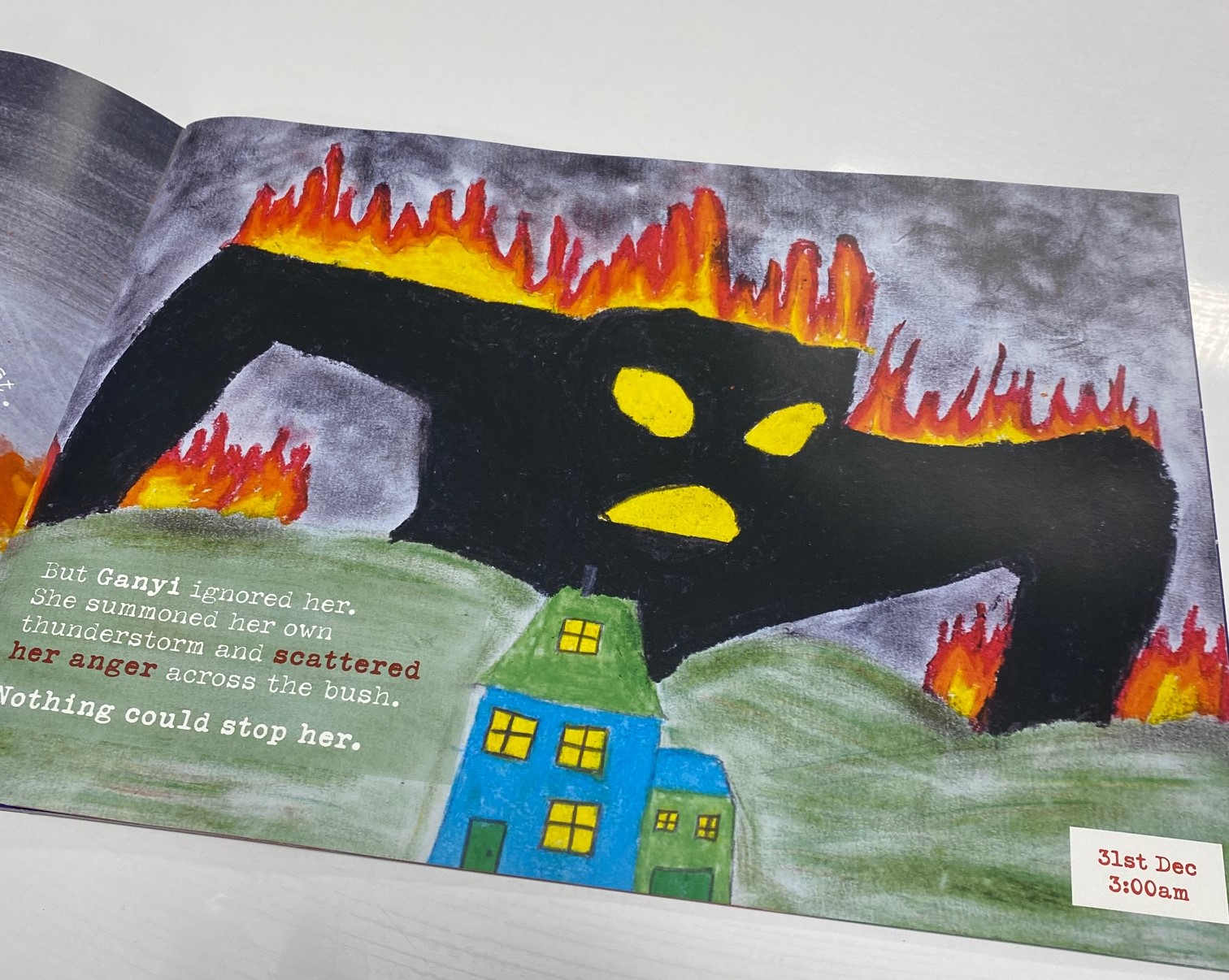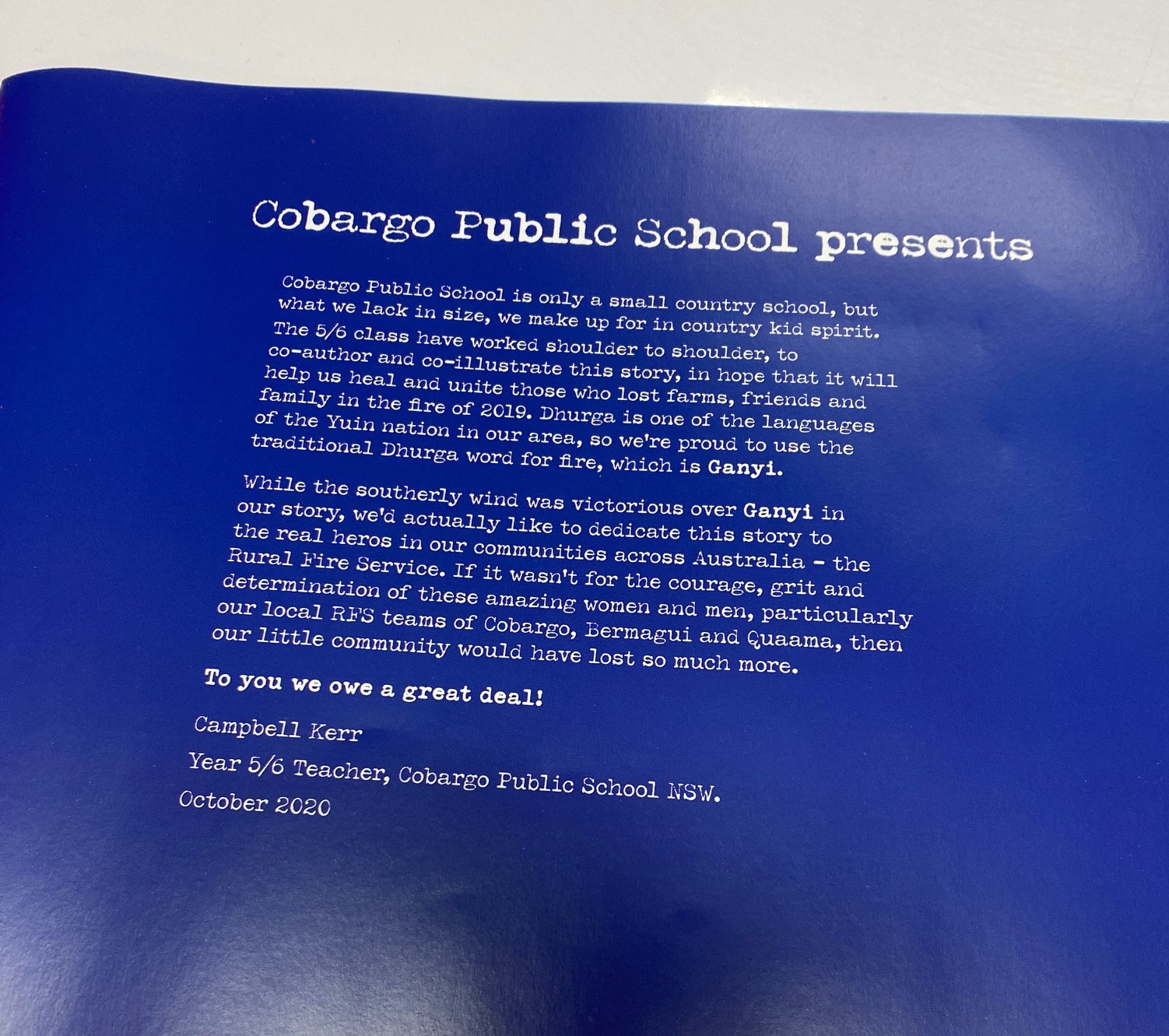
A page from 'The Day She Stole the Sun' a storytelling project led by educators and students at Cobargo Public School.
On the last day of 2019, the Black Summer bushfires reached the South Coast of New South Wales. Cobargo was one of the small communities in this region.
With approximately 70 students from K through to grade 6, Cobargo Public School is the only primary school in the small rural town of just over 2,000 people.
Campbell Kerr was a grade 5 and 6 teacher at Cobargo Public School at the time of the fires.
Campbell explains that it wasn’t until the second semester of 2020 that students began to show signs of needing medium- to longer-term recovery and resilience-building support from educators and the learning community. “It wasn't really until term three, when the smoke had started to clear, that we really got time to catch our breath.”
This is when Campbell began to hear conversations between the students as they started to process emotions and memories of the bushfires.
““On playground duty I’d hear the kids talking about things like, “It’s a really windy day today, can anyone see any smoke?” They seemed really flat and tired and anxious and not their normal selves.””
Campbell recognised though, that instead of telling his students what their recovery should look like, they needed to be the ones to guide the process. As Campbell explains: “They wanted to tell their story from their own perspective.”
The class decided that the most meaningful way for the young people to have a voice would be through a storytelling project, led by the students. Campbell gave them the option to work on the project individually, but the students decided it should be a collaborative effort.
““They were adamant we want to do it together, we want to support each other, we want this to be a team effort, we want to co-author it we want to co-illustrate it, so everyone gets to share their story.””

The school's storytelling project was initially about healing, but turned into a beautiful story shared with parents and children.
Having a safe space for the students to unpack how the bushfires had impacted their mental health and wellbeing was a key consideration for Campbell. He engaged the school counsellor to be part of classroom discussions to brainstorm project ideas that would support young people to process their experiences during, and after, the bushfires.
With 20 per cent of the young people at Cobargo Public School identifying as First Nations, Campbell incorporated lessons on local Aboriginal history and culture to foster an inclusive environment and meaningful context to the students’ experiences.
Campbell explains: “We looked at a few pourquoi tales, how the echidna got its spines, and this other stuff, and then they (the students) started trying to connect some of the local Dhurga language with some of the characters in the story.
"We did some research and we talked to one of the local language groups and they told us that the (local) name for fire in the Dhurga language was Ganyi. So, the fire became Ganyi, and she took on a persona, and then we had the Southerly, who was her opposer and the hero that came to stop her.”
The final product was a story titled, “The day she stole the sun.”
The empowering project had a positive flow-on effect, supporting the relationships and recovery of families.
““Initially it was about them healing, about them (the students) sharing their story and what it turned into was a beautiful story that they took home and shared with their parents and what that did was it started conversations between parents and kids about a really tough time.””
The book also had an impact on wider community members, like the local Rural Fire Service, who the class invited to the school to present them with a copy of the book.
“What started as something for a class, to help with healing and provide a medium for their feelings and support for each other, turned into something that brought a community together," added Campbell.
Correct at time of publication.